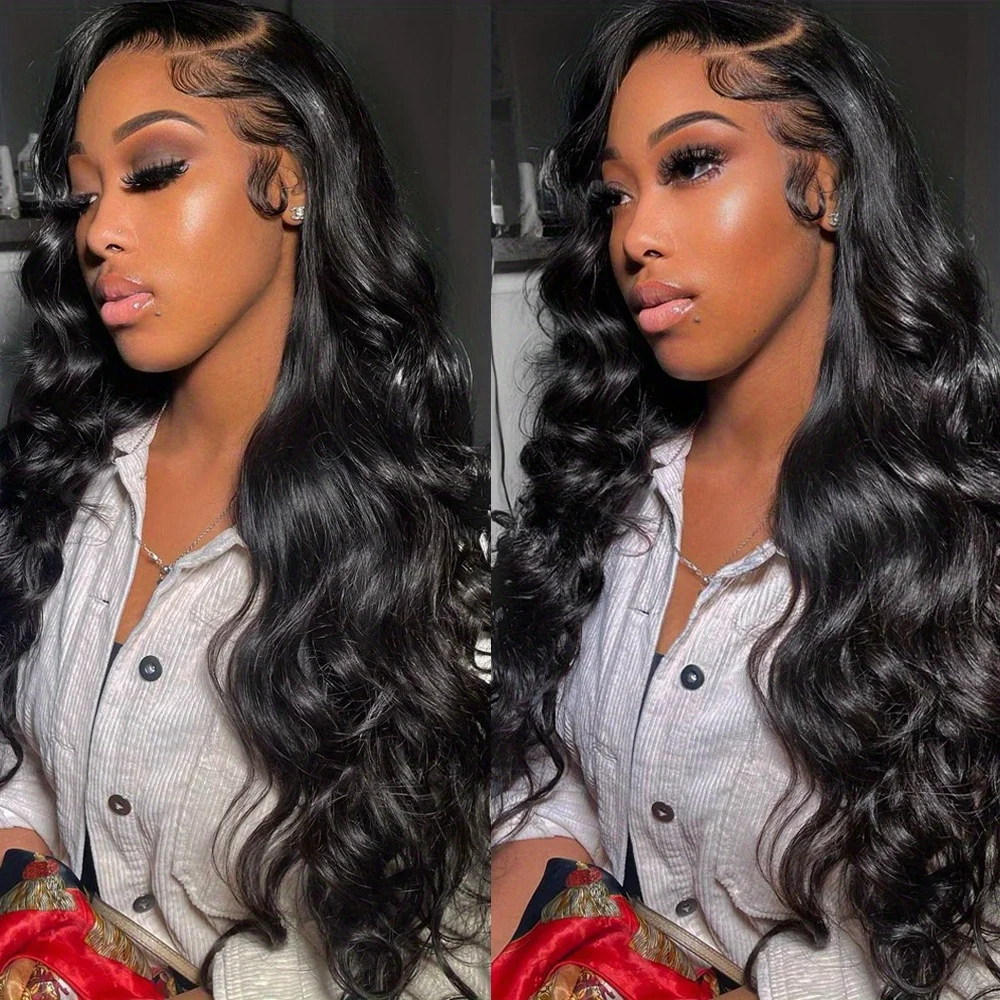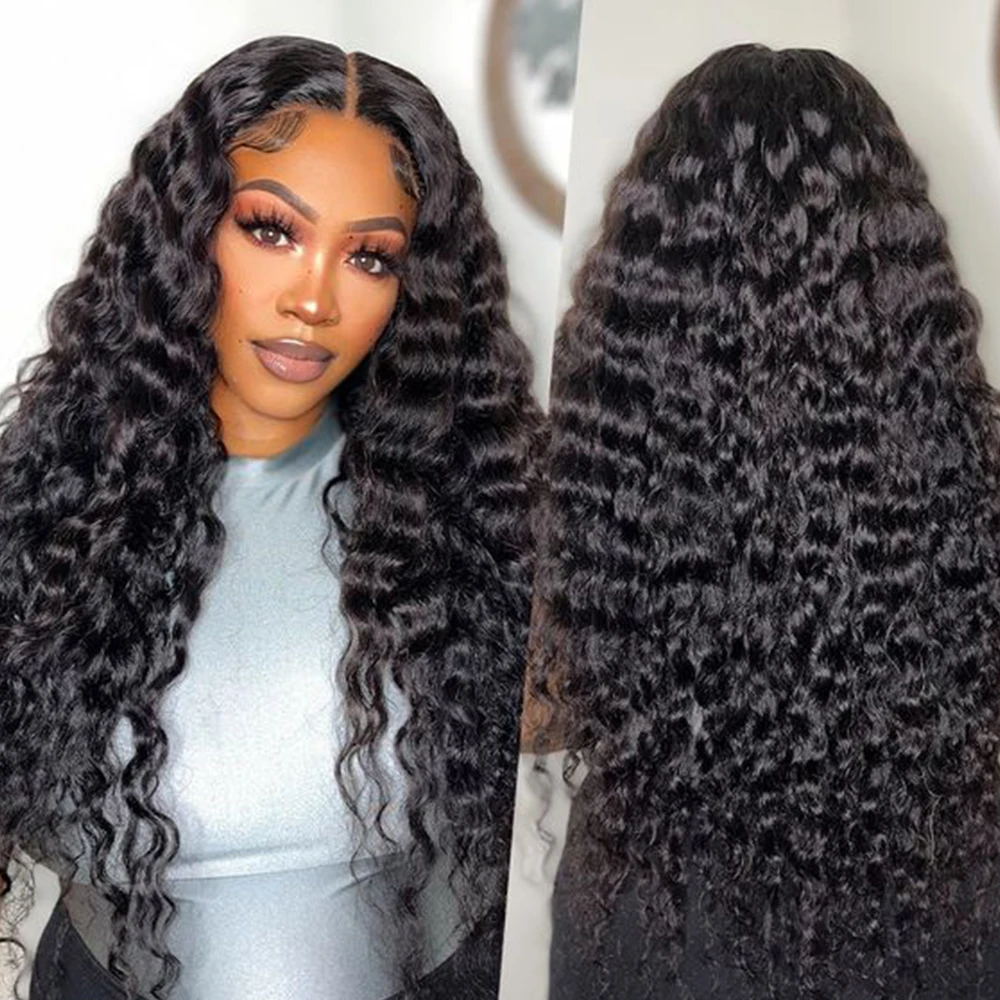
Water Wave Wig: Style, Care, and Versatility
Understanding the Water Wave Wig
Water wave wig have become increasingly popular in the world of hair fashion, offering a unique and natural-looking style that mimics the appearance of hair that has been freshly washed and left to air dry. These wigs feature a distinctive pattern of loose, S-shaped waves that create a soft, romantic look. The texture of water wave wigs falls between body wave and deep wave styles, providing a perfect balance of volume and definition.
Made from either human hair or high-quality synthetic fibers, water wave wigs come in various lengths, colors, and densities to suit different preferences. The versatility of this style allows wearers to achieve a range of looks, from casual everyday wear to more glamorous evening styles. Water wave wigs offer a low-maintenance alternative to natural hair styling, making them an attractive option for those seeking a effortlessly beautiful appearance.
Choosing the Right Water Wave Wig
Selecting the perfect water wave wig requires consideration of several factors to ensure the best fit and appearance. Hair type plays a crucial role in the decision-making process, with options ranging from 100% human hair to blended and synthetic fibers. Human hair wigs offer the most natural look and feel, along with greater styling versatility, but come at a higher price point. Synthetic options provide a more affordable alternative with easier maintenance.
The cap construction of the wig also affects comfort and appearance, with choices including lace front, full lace, and traditional cap styles. Lace front wigs create a natural-looking hairline, while full lace wigs offer the most styling flexibility. When choosing a length, consider both personal preference and lifestyle factors. Color selection should complement the wearer’s skin tone and personal style. Density, which refers to the amount of hair on the wig, should be chosen based on desired volume and natural hair thickness.
Styling Techniques for Water Wave Wigs
Water wave wigs offer a wide range of styling possibilities, allowing wearers to create various looks. To enhance the natural wave pattern, apply a leave-in conditioner or curl-defining cream to damp hair and scrunch gently. For a more defined look, use a diffuser attachment on a low heat setting when drying the wig. To create a sleeker style, carefully straighten the wig using a flat iron on a low to medium heat setting, working in small sections.
For added volume, gently tease the roots at the crown of the wig. Experiment with different parting styles to change up the look, from a classic center part to a deep side part for added drama. Half-up styles and loose braids work well with the water wave texture, creating romantic and bohemian-inspired looks. When styling, always use heat protectant products to prevent damage to the wig fibers. Remember to style the wig while it’s on a wig stand for easier manipulation and to maintain its shape.
Proper Care and Maintenance of Water Wave Wigs
Maintaining a water wave wig properly ensures its longevity and keeps it looking fresh. Wash the wig every 6-8 wears or when product buildup becomes noticeable. Use a sulfate-free shampoo and conditioner specifically designed for wigs to clean and moisturize the hair. Gently work the shampoo through the hair in a downward motion, avoiding rubbing or tangling. Rinse thoroughly with cool water and apply conditioner, focusing on the ends.
After washing, gently squeeze out excess water with a towel and allow the wig to air dry on a wig stand. Avoid brushing the wig when wet to prevent damage to the wave pattern. Instead, use a wide-tooth comb or your fingers to detangle gently. Store the wig on a wig stand or in its original packaging when not in use to maintain its shape. Regular deep conditioning treatments help keep the wig soft and manageable. For synthetic wigs, avoid using heat styling tools unless the wig is specifically labeled as heat-resistant.
Customizing Your Water Wave Wig
Customizing a water wave wig allows wearers to achieve a more natural and personalized look. Trimming the wig to frame the face can enhance its flattering effect. For lace front wigs, plucking the hairline creates a more realistic appearance by reducing the density at the front. Adding baby hairs along the hairline further enhances the natural look. Experiment with different styling products to achieve desired textures and hold.
For those seeking a change, consider dyeing human hair wigs to a new color, but always consult a professional to avoid damaging the wig. Custom-cut layers can add movement and dimension to the wig, tailoring it to complement individual face shapes. Some wearers choose to add highlights or lowlights for a multi-dimensional color effect. When customizing, make small changes gradually to avoid over-altering the wig. Remember that most alterations to wigs are permanent, so careful consideration is necessary before making significant changes.
Blending Water Wave Wigs with Natural Hair
For a seamless look, blending a water wave wig with natural hair requires skill and patience. Start by preparing the natural hair by braiding it close to the scalp or using a wig cap to create a smooth base. If leaving out some natural hair, style it to match the texture of the wig. Use edge control or styling gel to lay down baby hairs and create a natural-looking hairline.
For lace front wigs, carefully cut and customize the lace to match the skin tone and natural hairline. Blend the wig with natural hair at the temples and nape of the neck for a more integrated appearance. Use concealer or powder that matches the scalp color to further camouflage the wig’s edges. Styling both the wig and natural hair together, such as creating a half-up style or adding braids, can help unify the overall look. Regular adjustments and touch-ups throughout the day may be necessary to maintain a flawless blend.

Addressing Common Water Wave Wig Concerns
Water wave wigs, like all hair pieces, may present certain challenges that wearers should be prepared to address. Tangling can occur, especially in longer styles, but regular gentle detangling with a wide-tooth comb can prevent this issue. Frizz may develop over time, particularly in humid conditions. Combat frizz by using anti-frizz serums and avoiding excessive touching of the wig. Shedding is normal to some extent, especially in human hair wigs, but excessive shedding may indicate the need for better care or a higher quality wig.
If the waves begin to loosen or lose definition, refresh them by applying a curl-defining product and scrunching the hair while damp. For synthetic wigs that have become frizzy or lost their shape, a steam treatment can help restore the original wave pattern. Address any discoloration in human hair wigs with color-depositing shampoos or professional color treatments. Always handle the wig gently and avoid over-styling to maintain its quality and appearance.
Seasonal Styling for Water Wave Wigs
Adapting water wave wigs to different seasons ensures year-round comfort and style. In summer, opt for updos like high ponytails or messy buns to keep cool while showcasing the wig’s texture. Beach-inspired looks work well with the natural wave pattern, achieved by applying sea salt spray for a tousled effect. For fall, incorporate warm-toned accessories like headbands or scarves to complement the season’s colors. Winter styling may include fuller, more voluminous looks to provide extra warmth.
Try half-up styles with decorative clips or pins for a festive holiday appearance. In spring, embrace the wig’s natural texture with loose, flowing styles adorned with floral accessories. Throughout the year, consider how the changing light affects the wig’s color and adjust styling accordingly. Seasonal color touch-ups or temporary color sprays can refresh the wig’s look to match the time of year. Remember to adjust care routines seasonally, providing extra moisture in dry winter months and protection from sun damage in summer.

Comparing Water Wave Wigs to Other Textures
Water wave wigs offer a unique texture that sets them apart from other popular wig styles. Compared to body wave wigs, water wave patterns feature tighter, more defined S-shaped curls, providing more texture and volume. Deep wave wigs have even tighter curls than water waves, creating a more dramatic look. Straight wigs lack the natural movement of water waves but offer a sleek, polished appearance.
Kinky curly wigs provide a tighter, more coiled pattern compared to the looser waves of water wave styles. Each texture has its own benefits and styling possibilities. Water wave wigs strike a balance between defined texture and manageability, making them versatile for various occasions. They require less maintenance than tighter curl patterns but offer more movement and volume than straight styles. The choice between these textures often comes down to personal preference, desired level of maintenance, and the ability to achieve different looks.
The Future of Water Wave Wigs in Hair Fashion
As hair fashion continues to evolve, water wave wigs are likely to remain a popular choice due to their versatility and natural appearance. Advancements in wig technology promise even more realistic hairlines and scalp appearances, making detection nearly impossible. Innovations in fiber technology for synthetic wigs may lead to heat-resistant options that rival human hair in styling versatility. The trend towards sustainable and ethical sourcing of human hair for wigs is likely to grow, influencing purchasing decisions.
Customization options may expand, allowing buyers to specify exact colors, lengths, and densities when ordering wigs. Virtual try-on technology could revolutionize the way consumers shop for wigs, providing a realistic preview before purchase. As social media continues to influence beauty trends, water wave wigs may see new styling innovations and color trends emerge rapidly. The increasing acceptance of wigs as a fashion accessory rather than just a necessity may lead to more adventurous and creative applications of water wave styles in everyday wear and high fashion alike.



